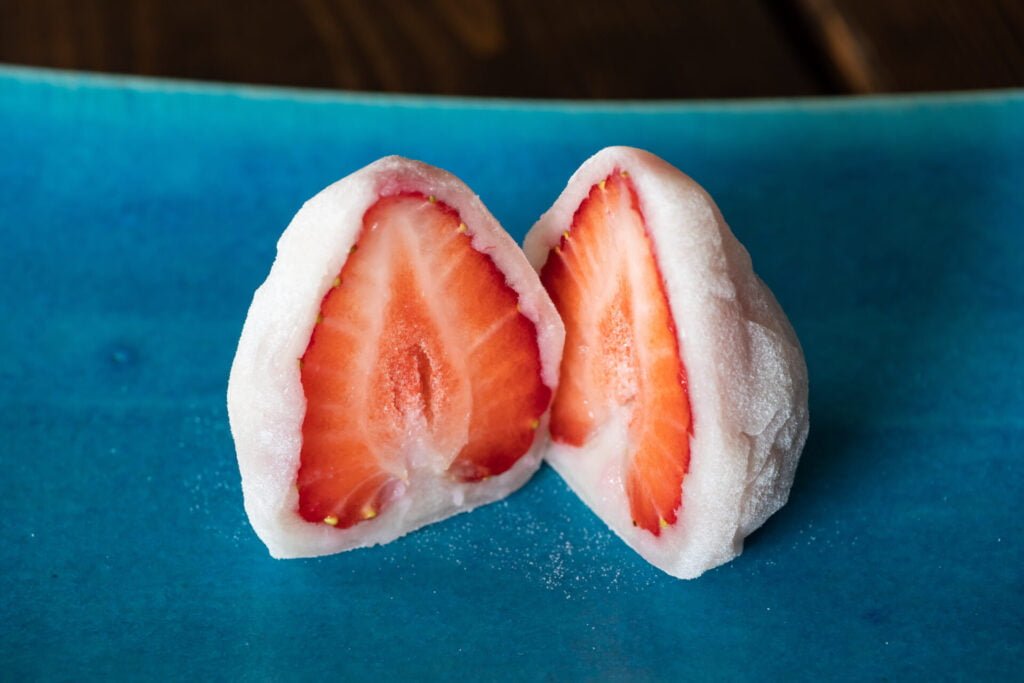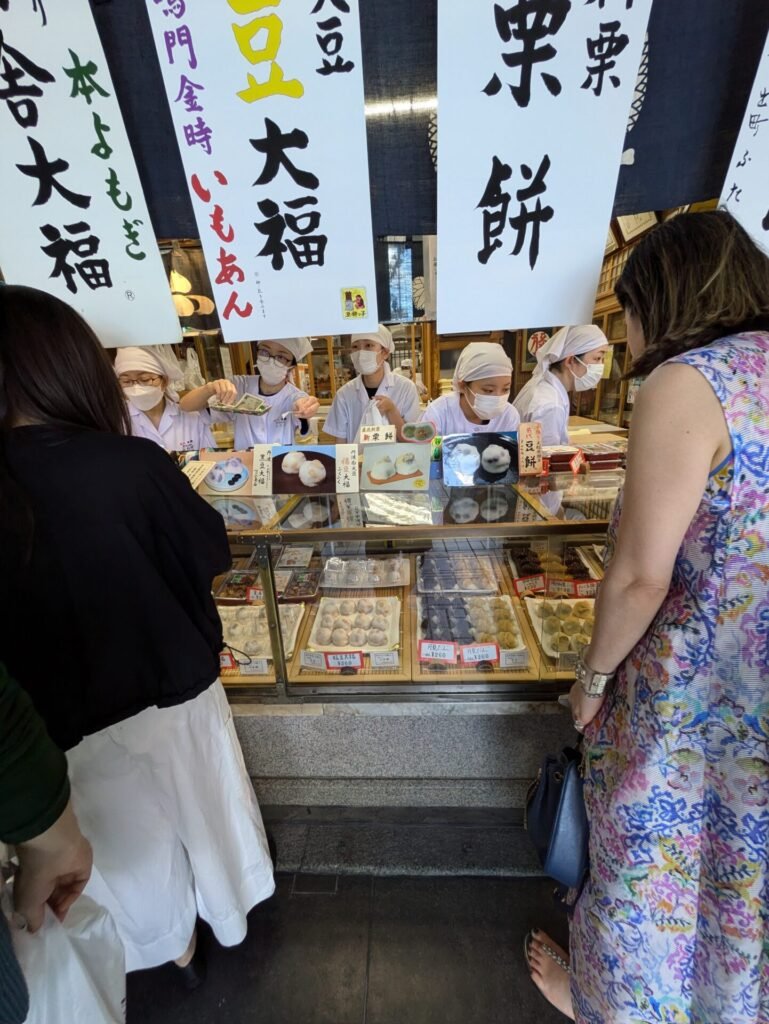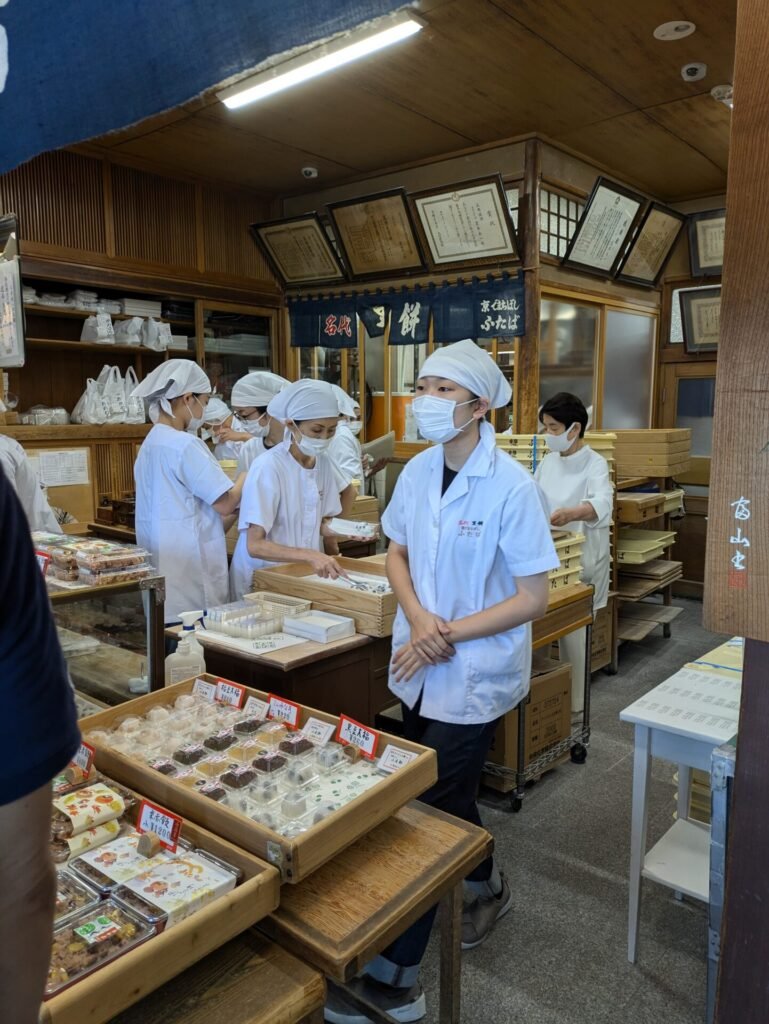Daifuku: Unveiling the Delicious World of Traditional and Modern Japanese Sweets
Daifuku, a cherished wagashi in the world of Japanese sweets, exemplifies the artistry and diversity of traditional Japanese desserts. This beloved confection, with its soft mochi exterior and sweet filling, has been delighting palates for generations. Join us as we explore the rich variety of daifuku, from classic flavors to innovative creations in the ever-evolving landscape of Japanese confectionery.
The Essence of Daifuku: A Cornerstone of Wagashi and Japanese Desserts
The basic structure of daifuku is simple: a soft mochi (rice cake) exterior wrapped around a sweet filling. The most common daifuku consists of white mochi encasing sweet red bean paste (anko). This simple combination creates a taste and texture that continues to captivate many people.
Traditional daifuku-making involves pounding steamed glutinous rice in a mortar. The resulting mochi is then thinly stretched, filled with anko, and shaped into a round form. The surface is dusted with potato or wheat starch to prevent sticking.
The appeal of daifuku lies in its soft, chewy texture and the perfect balance of sweetness. With each bite, you first experience the smoothness of the mochi, followed by the sweetness of the filling melting in your mouth. This progression of flavors creates the deep, satisfying taste of daifuku.

Diverse Daifuku Varieties: Exploring the Rich Tapestry of Japanese Sweets
The world of daifuku is incredibly diverse. While the basic red bean paste (available in smooth or chunky varieties) is most common, there are many other fillings such as white bean paste, chestnut paste, and zunda (mashed edamame) paste.
The mochi exterior also comes in various forms. Yomogi (mugwort) mochi used in kusamochi daifuku offers a taste of spring. Daifuku made with domyoji-ko (coarsely ground glutinous rice flour) provides a unique texture.
These combinations of different fillings and exteriors create endless variations of daifuku. For example, you might find yomogi mochi filled with smooth red bean paste, or white mochi filled with zunda paste, each offering a distinct flavor and texture experience.
Seasonal Daifuku: Japanese Desserts That Embrace Nature’s Rhythms
The changing seasons in Japan are deeply reflected in the world of daifuku.
Spring brings sakura mochi. While not strictly a daifuku, it’s a close relative, wrapping bean paste in mochi and a pickled cherry blossom leaf. It’s a quintessential spring wagashi.
Summer sees the rise of fruit daifuku. Strawberry daifuku, with its perfect balance of tart fruit and sweet anko, is especially popular. Other seasonal fruits like melon or mango also make appearances in summer daifuku variations.
Autumn is the season for chestnut daifuku. The rich flavor of chestnut paste wrapped in white mochi represents the taste of fall.
In winter, yuki-mi daifuku appears. This modern take on daifuku contains ice cream inside the mochi, offering a delightful contrast between the cold ice cream and soft mochi.
Through these seasonal variations, daifuku offers us a taste of each season’s unique flavors.
Kyoto’s Culinary Gem: Demachi Futaba’s Exquisite Daifuku
Near the World Heritage site of Shimogamo Shrine in Kyoto, there’s an unmissable Japanese confectionery shop: Demachi Futaba. Just as Shimogamo Shrine is famous as the birthplace of mitarashi dango, Demachi Futaba is a representative of Kyoto’s wagashi culture.

Located in Demachi Shopping Street, about a 5-minute walk from Demachiyanagi Station, Demachi Futaba always has a line of both tourists and locals, buzzing with activity. When you reach the storefront, you’re greeted by a showcase filled with various wagashi. The sight is so enticing that visitors often find themselves wanting to try everything. Seasonal product names hanging from the ceiling further enhance the lively atmosphere.



Demachi Futaba’s signature product is their bean daifuku, called “mame mochi.” It’s characterized by its adorable round shape with visible beans. When you bite into it, you experience the soft yet resilient mochi, the smooth anko, and the texture of large beans, creating a perfect harmony of textures.


Demachi Futaba uses freshly pounded mochi every morning, so it’s best to eat their daifuku as soon as possible after purchase to enjoy its softness and flavor at its peak.
When visiting Kyoto, don’t miss the chance to taste the authentic flavors at Demachi Futaba. The daifuku from this long-established shop is sure to become an unforgettable memory.
Shop Information:
- Phone: 075-231-1658
- Hours: 8:30 AM – 5:30 PM
- Closed: Tuesdays and 4th Wednesday of the month (or the following day if it’s a holiday)
- Access: 5-minute walk from Demachiyanagi Station on the Keihan Main Line
Mastering the Art of Enjoying Daifuku: Tips for the Perfect Japanese Sweet Experience
To fully enjoy daifuku, there are a few tips to keep in mind.
First, daifuku is typically eaten at room temperature. If taken directly from the refrigerator, the mochi might be hard, so letting it sit for a while allows you to enjoy its original chewy texture.
While it’s common to eat daifuku with your hands, you can also cut it neatly to enjoy. Cutting into a well-filled daifuku can reveal a beautiful cross-section.
Regarding storage, daifuku is best eaten fresh. Ideally, consume it on the day of purchase. If you must store it, keep it in the refrigerator and consume as soon as possible. Remember to bring it back to room temperature before eating, as refrigeration can harden the mochi.
Nutritionally, daifuku is high in carbohydrates and calories. One daifuku typically contains about 200 kcal. While you can get some dietary fiber and polyphenols from the red beans, be mindful of the high sugar content.
Daifuku embodies the four seasons and culture of Japan. We hope you thoroughly enjoy its unique textures and diverse flavors, experiencing the depth of Japanese food culture.
